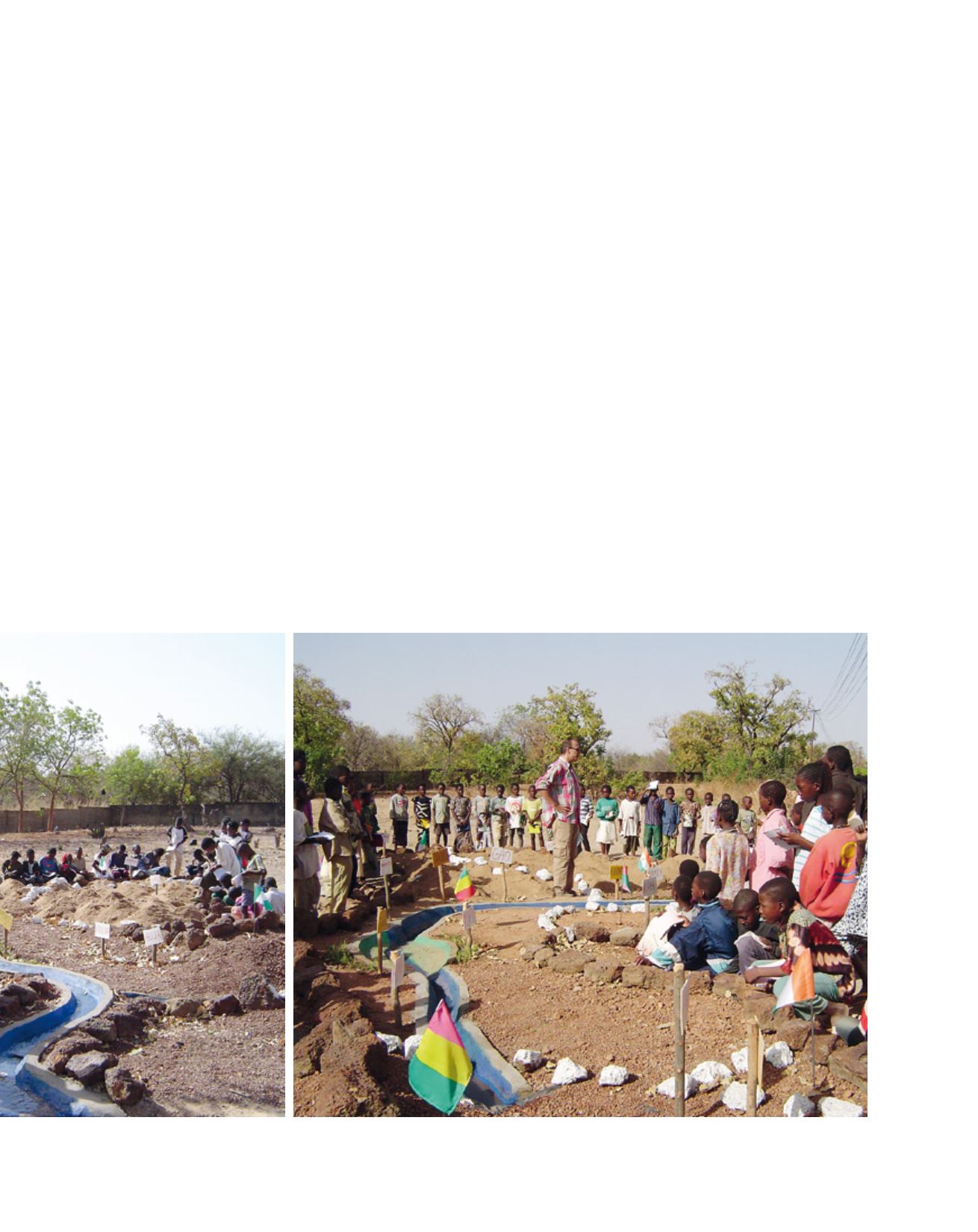

[
] 75
T
ransboundary
W
ater
M
anagement
sensitivity to hazards and phenomena, whether
natural or not: drought and water scarcity, floods, dam
management, pollution, invasive species and so on.
The invitation, which was made by NBA to regional
organizations and associations during a workshop gath-
ering the nine basin countries in early 2005, has been
the starting point of thinking about the participation of
civil society in the shared vision process in the Niger
River Basin. The identification of stakeholders and
interested parties was a prerequisite. Among non-state
stakeholders we can distinguish groups, such as farmers
or irrigators’ associations, from unorganized water
users, which are the most numerous and often the ulti-
mate recipients of various development programmes.
A study for the identification and characteriza-
tion of water users in the Niger River Basin was
carried out under the coordination of Eau Vive and
the International Secretariat for Water. Its outcomes
were presented at the first regional forum of basin
resources users, held in February 2006 in Fada-
Ngourma in Burkina Faso. For the first time, this step
allowed the congregation of civil society organiza-
tions on the basin scale to discuss issues of common
interest with the states and partners. Several resolu-
tions of the NBA Council of Ministers eventually led
to the establishment of a regional coordination of the
Niger Basin users, based on nine national coordina-
tion processes.
Charter. NBA’s major challenge is to accelerate and support the
building and coordinated management of large hydraulic struc-
tures in the basin.
The Organization for the Development of the Senegal River
(OMVS) was created in 1972. It is an international institution
based in Dakar which gathers Guinea Conakry, Mali, Mauritania
and Senegal around common goals, including food self-sufficiency
for the basin people, economic development of the member states
and preservation of the balance of ecosystems in the region. OMVS
has adopted a Water Charter and is a globally rare example of joint
ownership of large dams.
The International Commission of the Congo-Ubangi-Sangha
Basin (CICOS), established in 1999, expanded its mission to inte-
grated water resource management (IWRM) in 2007, in addition to
its original mandate focusing on the promotion of inland naviga-
tion. The CICOS member states (Cameroon, the Central African
Republic, Congo, Gabon and the Democratic Republic of Congo)
cover 83 per cent of the catchment area of the Congo River, the
second largest river basin worldwide with 3,822,000 km².
Among the stakeholders in basin management we can distin-
guish the public sector (government administration, public
agencies, local communities and authorities) on the one hand and
other stakeholders on the other: civil society (associations, non-
governmental organizations and water users), trade unions and
professional organizations. Stakeholders in a transboundary basin
belong to different countries but share a common resource, land
and heritage, including cultural. This sharing can be expressed
through similar activities (agriculture, fishing, etc) or by a single
Images: © John Burton


















